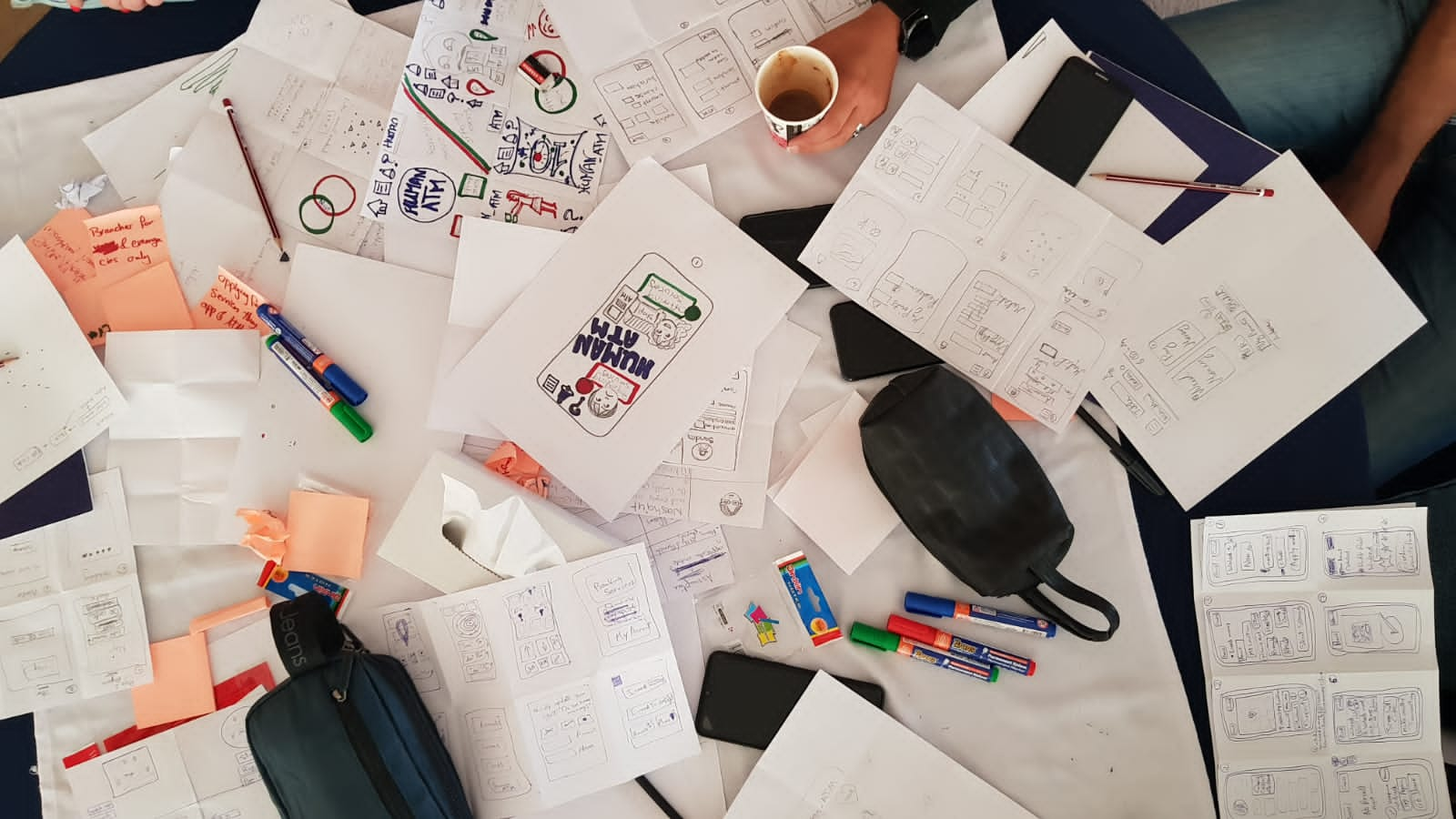The Hidden Scalability Crisis That Kills Successful Products — And How to Build Experiences That Grow Stronger with Size
When Success Creates New Challenges
Every product leader dreams of explosive growth. But behind the excitement of acquisition charts lies a harsh reality: the UX that delights early adopters often collapses under the weight of mass-market adoption.
This isn’t about infrastructure. Your servers, databases, and CDNs can handle scale. The real challenge is human: user behavior and expectations shift dramatically as your audience grows and diversifies.
- At 1,000 users, you have loyal early adopters who tolerate quirks and complexity.
- At 10,000 users, you still benefit from an engaged community giving feedback and adapting.
- At 100,000+ users, you’re dealing with mainstream customers who demand clarity, speed, and trust from the first click.
What once felt like a competitive advantage can quickly become a barrier to adoption.
The Scale Transition Points: When UX Rules Change
1,000 to 10,000 Users: The Community Phase
- Users are patient and forgiving.
- Feature complexity is tolerated.
- Personal touch and direct feedback still scale.
10,000 to 100,000 Users: The Diversity Challenge
- Patience shrinks.
- Feature discovery becomes critical.
- Use cases multiply, stretching your product beyond original assumptions.
- Regional differences surface; engineering teams scramble.
100,000+ Users: The Mass Market Reality
- Zero tolerance for confusion.
- Micro-frictions snowball into churn.
- Cultural adaptation becomes mandatory.
- Large-scale user education becomes impractical.
The Hidden Scalability Killers in UX Design
Most teams focus on technical scalability while missing the human scalability crisis. Here are the UX elements that break first when user bases explode:
1. Cognitive Load Accumulation
At small scale, users learn your interface gradually. At large scale, new users encounter your full complexity immediately. Every additional feature, menu item, and configuration option compounds the learning burden for newcomers.
The Scale Problem: What feels like “powerful functionality” to existing users becomes “overwhelming complexity” to new users. Your retention rate at first use plummets while your power user satisfaction remains high, creating misleading metrics.
Cultural Context Evolution
Early users often share similar backgrounds, languages, and mental models. As you scale globally, these shared assumptions become limitations. Interface patterns that feel intuitive to your initial market may feel unfamiliar to new cultural contexts.
Regional Scaling Considerations: According to market analysis, understanding cultural nuances becomes critical when expanding to new regions. A product that scales successfully across Western markets might face different challenges in Middle Eastern markets—not due to technical issues, but because the UX assumptions were built for different cultural patterns of decision-making, trust-building, and social interaction.
3. Use Case Explosion
Small user bases have predictable use cases. Large user bases create usage patterns you never anticipated. Your carefully designed “happy path” becomes just one of thousands of user journeys, many of which break your interface assumptions.
The Pattern: Features designed for specific use cases get repurposed by users for completely different goals. Your analytics show unexpected behavior, but understanding why requires systematic research at scale.
4. Support and Education Breakdown
Personal onboarding works at 1,000 users. Email support works at 10,000 users. At 100,000+ users, any UX element that requires explanation becomes a massive cost center or abandonment point.
The Middle East Scaling Considerations: Cultural UX at Scale
For companies scaling from MENA markets to global audiences (or vice versa), scaling UX design becomes exponentially complex. Cultural interface patterns that work effectively in one region might require adaptation for others.
Regional Expansion Patterns: Market research indicates that e-commerce platforms often need to balance relationship-building focused features common in MENA markets with the efficiency-focused approaches preferred in European markets. Understanding cultural nuances becomes essential for brands to resonate and comply with local standards when expanding across regions.
The solution often involves developing culturally adaptive UX architecture that can serve multiple markets without compromising the core user experience.
Scaling UX Design Across Cultures:
Universal vs. Cultural Elements
- Core Functionality: Keep primary user flows universally intuitive
- Trust Signals: Adapt credibility indicators to regional expectations
- Social Features: Design for both individual and collective decision-making patterns
- Information Density: Allow cultural preferences for detail vs. simplicity
Adaptive Interface Architecture
Rather than creating separate products, smart teams build adaptive UX systems that respond to cultural context while maintaining brand consistency and development efficiency.
The Scaling UX Design Methodology: Building for Growth
Phase 1: Scale Readiness Audit (Current State Analysis)
User Diversity Assessment:
- Map current user base demographics, behaviors, and contexts
- Identify assumptions built into existing UX decisions
- Analyze which interface elements require cultural knowledge
- Document features that demand user education
Cognitive Load Inventory:
- Count decision points in primary user flows
- Measure time-to-value for new users vs. existing users
- Identify interface elements that require explanation
- Assess visual complexity and information hierarchy
Use Case Expansion Analysis:
- Document how users actually use features vs. intended design
- Identify popular user “workarounds” and adaptations
- Map edge cases that break current interface assumptions
- Analyze support tickets for recurring UX confusion patterns
Phase 2: Behavioral Segmentation Research (Understanding Scale Diversity)
User Journey Mapping at Scale:
- Power Users: How do experienced users navigate efficiently?
- Casual Users: What do infrequent users need to re-engage successfully?
- New Users: What causes confusion or abandonment in first sessions?
- Cultural Segments: How do regional differences impact user behavior?
Context Diversity Analysis:
- Device Usage: How does experience vary across mobile, tablet, desktop?
- Connection Quality: What breaks with poor internet or old devices?
- Multitasking Scenarios: How do users interact while distracted?
- Time Pressure: What happens when users need fast results?
Phase 3: Scalable UX Architecture Development
Progressive Disclosure Systems: Design interfaces that reveal complexity gradually based on user expertise and needs, rather than showing everything simultaneously.
Cultural Adaptation Frameworks: Build UX systems that can adapt to regional preferences without requiring separate product development for each market.
Self-Service User Education: Create UX patterns that teach users through interaction rather than requiring external documentation or support.
Behavioral Accommodation Design: Design interfaces that work well regardless of whether users follow your intended “happy path” or create their own usage patterns.
The Scale Testing Challenge: Validating UX at 100K+
Traditional user testing methods break down at scale. You can’t interview enough users to represent your diversity. A/B testing reveals what works statistically but not why it works culturally.
Scaling UX Design Research Methods:
Behavioral Segmentation Analysis
- Cohort Behavior Tracking: How do different user types interact over time?
- Cultural Pattern Recognition: What interface elements perform differently across regions?
- Usage Context Analysis: How does user behavior vary by device, time, and situation?
Predictive UX Modeling
- Friction Point Forecasting: Which current UX elements will break at larger scale?
- Cultural Expansion Planning: How will interface assumptions perform in new markets?
- Edge Case Impact Assessment: What happens when uncommon usage patterns become common?
The Reality About UX at Scale
Most products face increased complexity as they grow—not because teams stop prioritizing user experience, but because serving diverse audiences with varying needs, contexts, and expectations creates new challenges.
The features that resonated with early adopters may not translate to mainstream users. The cultural assumptions that worked well in initial markets often require adaptation for expansion markets. The “simple” interface that felt intuitive to engaged users can feel overwhelming to casual users discovering your product for the first time.
Scaling UX design isn’t about adding more features or making interfaces more complex—it’s about creating experiences that remain coherent and valuable as user diversity explodes.
When Your UX Isn’t Scaling
Warning Signs You Need Scalable UX Architecture:
- New user onboarding success rates decline as user base diversity increases
- Support requests grow disproportionately compared to user growth
- Feature usage becomes increasingly concentrated among power users
- Regional expansion faces unexpected adoption challenges
- User satisfaction feedback becomes more varied and contradictory
The Growth Challenge: As products become more successful and serve larger, more diverse audiences, maintaining consistent user experience quality requires intentional architectural planning. Teams that don’t proactively address scaling UX often find themselves reactive to problems rather than preventing them.
The webkeyz Scaling UX Design Methodology
At webkeyz, we’ve guided companies through the treacherous transition from intimate product experiences to mass-market UX architecture. Our scaling UX design methodology focuses on building user experiences that strengthen rather than weaken as they grow.
Our Approach:
- Behavioral Scalability Assessment: Identifying UX elements that will break at larger user volumes
- Cultural Adaptation Architecture: Building interfaces that work across Saudi, UAE, European, and US markets simultaneously
- Progressive Complexity Systems: Designing experiences that grow with user expertise
- Scale-Ready Research Methods: Validating UX decisions with methodologies that work at 100K+ users
Whether you’re preparing successful products for global expansion or scaling proven solutions to serve millions of diverse users, scaling UX design ensures your user experience becomes a competitive advantage rather than a growth limitation.
Building for Tomorrow’s Scale Today
The most successful products aren’t just designed for their current users—they’re architected for the users they’ll have at 10x their current scale. This requires a fundamental shift from designing for your existing audience to designing for human diversity at scale.
The Scaling UX Design Mindset:
- Design for strangers, not friends: Your interface must work for users who don’t know your story
- Assume cultural diversity: Every design decision should work across different cultural contexts
- Plan for misuse: Users will adapt your features to goals you never intended
- Build for impatience: Mass market users won’t tolerate learning curves
When you master scaling UX design, growth becomes fuel for better user experience rather than a threat to usability. Your 100,000th user gets a better experience than your 10,000th user, not worse.
Ready to Master the Complete UX Research Roadmap?
You’ve now seen how UX research transforms every stage of product development—from challenging initial assumptions to building experiences that thrive at massive scale. Each stage reveals critical insights that analytics alone cannot provide.
If your product is approaching a growth threshold — or expanding into new regions — webkeyz can help you scale UX with confidence.
Want the complete framework? It’s time to talk.
We’ll show you what it’s not showing you.
Schedule a consultation
Until next time explore webkeyz’s case studies
and Keep Thinking!








